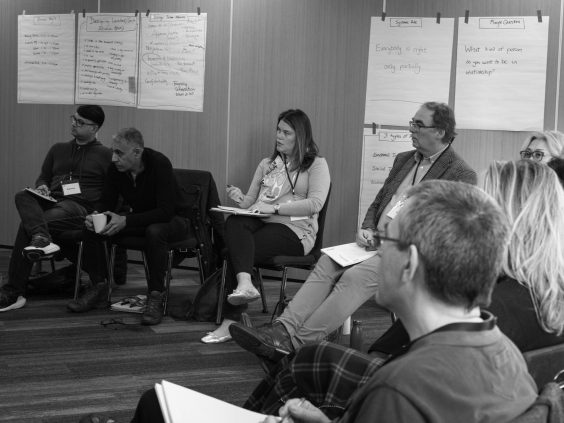The Bright and The Dark Side of AI: An intro to AI world

Share article:
You may also like to read
As artificial intelligence (AI) becomes increasingly integrated into our lives and workplaces, it’s essential to recognise that AI “thinks” differently than we, human beings, do, at least for now. Understanding and aligning with AI features can lead to more effective collaboration and better outcomes in both personal and professional contexts. What is AI and what are the shades of it?
The Unique Nature of AI “Thinking”
AI doesn’t think, feel or behave like a human…for now. Instead, it processes vast amounts of data at incredible speeds, identifying patterns and making predictions based on that data. One of the most accurate definitions of AI is published by Kaplan and Haenlein in 2019, who characterise AI as a system’s ability to correctly interpret external data, to learn from such data and to use those learnings to achieve specific goals and tasks through flexible adaptation. While humans rely on intuition, emotions, and context to make decisions, AI operates purely on logic and the information it has been trained on. This difference in “thinking” can be both a strength and a limitation.
We at Radial Change have been curious and playing with AI tools that can help us today! It’s an ever emergent Today (some features changing every day) If you are curious we found this website very helpful: whataicandotoday.com
Leveraging AI’s Strengths – The Bright Side of AI
One of AI’s greatest strengths is its ability to analyse data without bias, something humans often struggle with. AI can help identify trends and insights that might be overlooked by human analysis, making it a valuable tool for decision-making. By aligning with AI in this way, leaders can make more informed decisions that are grounded in data, rather than just gut feelings.
Additionally, AI’s capacity to handle repetitive tasks frees up human creativity and strategic thinking. Aligning with AI means embracing its ability to optimise operations, allowing humans to focus on areas where empathy, innovation, and complex problem-solving are required—skills that AI can’t replicate.
Imagine that you have your own company, either small, medium or large-size business. You decide to bring an AI partner in the boardroom, giving yourself permission to focus on the relationships with the employees and trusting your AI partner that will make the best financial decisions for your own company. Could that be a real scenario for you? Would you leave the economic predictions on the shoulders of your robotic partner?
The accountability of AI is still debatable in various fields – Organisational Psychology, Law, Business & Management. Zhao (2024) brings together various perspectives about this topic in the article published in Computer Law & Security Review: The International Journal of Technology Law and Practice. The idea of promoting AI in the boardroom can enable companies to increase their capabilities and eventually, their success, but the legal implications of doing this are still fuzzy and this is a huge limitation.
Understanding the Limitations – The Dark Side of AI
It’s crucial to understand AI’s limitations. AI systems are only as good as the data they are trained on, which means they can inherit biases present in that data. They also lack the ability to understand context, culture, and the nuances of human relationships. This is where human judgement remains irreplaceable.
So far, the AI research has mainly focused on the rewards of adopting new tools in business or task – related issues, but the idea of emotional intelligence of AI is not yet explored enough. Montemayor and his collaborators (2021) are challenging the positive impact of AI on the empathy in the healthcare system: If we create AI that is very good at cognitive empathy but which is incapable of emotional empathy, are we creating “psychopathic” and potentially inhuman machines?
To align effectively with AI, it’s important to maintain critical thinking. Trusting AI to provide valuable insights is key, but so is knowing when to rely on human intuition and experience. This balance ensures that AI serves as a powerful tool rather than a sole decision-maker.
Collaborating with AI
The best outcomes are given by a partnership between humans and AI, where each plays to its strengths. Leaders should foster a culture where AI is seen as an ally, not a replacement. This involves training teams to work alongside AI, interpret its outputs, and use it to enhance their own capabilities.
Radial Change is intrigued (like many of you) and our focus is to explore the impact of digital technology on individuals, and their personal and professional relationships. To that avail, we are now sponsoring research to gather scientific data on how AI impacts the dynamics within teams and organisations. If you want to contribute to the research or be the first to have access to our finds please register your interest here:
This is the beginning of our enquiry. For now we know that, aligning with AI requires understanding of its unique way of “thinking” and using that knowledge to complement human skills. By recognising the differences and leveraging them appropriately, we can harness the full potential of AI while maintaining the critical human elements that drive creativity, empathy, and strategic vision.


